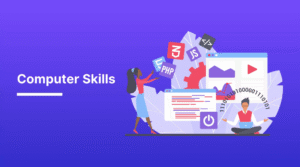In our ever-connected world, the line between digital tools and digital sanctuaries is blurring dangerously. We’re under immense pressure to stay constantly online, bombarded with notifications and information. This results in our constant reliance on our screens. This isn’t just a matter of eyestrain or poor sleep; constantly switching between tasks fragments our attention, making it harder to focus and, in the long run, decreasing our productivity. Many people believe that the more time we spend at a computer, the more productive we become, but neuroscience tells us otherwise.
You can’t achieve uninterrupted, focused attention necessary for true deep work—the kind that gets things done—by spending all your time glued to your computer. This article isn’t a call to abandon technology but rather a way to regain control of your mind. We explore a smart approach to reducing screen time by redesigning your digital habits and environment. This will transform your relationship with technology from compulsive use to conscious mastery, making you more creative, productive, and clear-headed.
Conducting a Digital Audit to Understand Your Usage:
It’s important to understand how you’re spending your computer time before you can effectively reduce it. Most of us have huge misconceptions about how we use our internet time. A digital audit can help you stop guessing and focus on the facts. Use your phone’s built-in screen time tracker or a separate app to track your usage for a week. Don’t judge the evidence; just observe. Pay close attention to two numbers: the total time you spend on your computer and the apps that take up the most time. If you’re not paying attention, you might find yourself opening social media dozens of times a day or spending hours on YouTube. This audit isn’t meant to make you feel bad; it’s meant to gather information. A clear, objective understanding of your digital diet is essential for targeted and effective changes. It allows you to accurately eliminate time wasters without compromising the tools you actually use for work.
Plan with Target Limits:
Now that you’ve completed your assessment, the next step is to set clear boundaries to help you stay focused. This isn’t about willpower but about creating an environment conducive to success. First, block out “focus time” in your calendar, where you ignore all unimportant notifications and close all irrelevant tabs and apps. Use this time to do your most important work and treat it as sacred. “Distraction time” refers to short, scheduled moments where you can check personal messages, social media, or the news.
This approach, known as “timeboxing,” embraces distractions rather than trying to eliminate them. Additionally, set a digital block an hour before bed. During this time, don’t bring your phone or computer into the bedroom. This helps you sleep better and relax. These boundaries create a system where deep work is the norm and distractions are the exception.
Make the Most of Your Digital Space for Focus:
Your devices are designed to capture and hold your attention. You need to refocus your attention to regain it. Start by tidying up your computer workspace. Remove unnecessary apps from your phone’s home screen and clear your desktop and browser tabs. This reduces visual clutter and makes decision-making easier. Next, go into your device’s settings and disable almost all push notifications. The only exceptions are interpersonal communication that requires immediate attention, such as calls or messages from important people.
You can set your phone screen to grayscale to remove the dopamine-stimulating colors that make apps so appealing. When concentrating on work, use a website blocker on your computer to avoid visiting websites you know will waste your time. By making your devices less captivating and annoying, you can go from resisting temptations to not having to resist them at all.
Rediscover the Power of an Analog Alternative:
We often spend too much time on screens when traditional methods would be faster and more focused. Choosing to switch from digital to physical habits can significantly reduce our screen time while simultaneously improving brain function. Switch from electronic documents to a physical notebook and pen for planning, ideation, and problem-solving. Writing by hand activates different areas of the brain, making you more creative and better at remembering things. Instead of reading a story on a screen, print out longer articles so you can read more slowly and take notes. Instead of using an app to keep track of your to-do list, make a physical copy. Checking off a task on paper can provide a more satisfying and authentic sense of accomplishment. These analog interventions reduce your computer time and slow you down, allowing you to think more deeply and generate better ideas.
Get Valuable Offline Supplements to Help You Grow:
The final component involves engaging in mentally stimulating activities during your screen time. Unplanned reading breaks are likely to lead to boredom, and you’ll quickly fall back into old habits. Plan and prioritize offline activities that are important to you and that make you feel positive. This could be exercising, reading a real book, practicing a skill (like playing an instrument or woodworking), or talking to a loved one without technology. These activities are more than just “rest”; they’re essential for brain recovery. They activate the brain’s default mode network, which is crucial for inspiration, insight, and memory. Once you’ve compiled a list of enjoyable things to do offline, you can choose one that’s engaging and lasting. This will help you reduce your screen time and lead a more fulfilling, productive, and balanced life.
Conclusion:
Reducing screen time to increase your productivity is a significant shift in thinking, with implications that extend far beyond the limitations of apps. In a world designed to steal your attention, this is a smart way to manage it. The first step is to understand your habits through a digital audit. The next step is to strategically set boundaries and environments that make it easier for you to focus. You can break the cycle of compulsive digital consumption by using analogies for deeper reflection and by spending your increased spare time on activities that make you feel better. The ultimate goal isn’t to become a Luddite but to change the way you interact with technology to gain control over it. This approach saves you time and restores your mental energy, imagination, and inner peace. This makes your work not only more productive but also more meaningful and sustainable.
FAQs:
1. Will reducing screen time make me less productive?
Absolutely not. The goal is to eliminate less valuable, distracting screen time, such as social media and endless scrolling, so you can focus on valuable work. This will make you more productive.
2. What’s the most important change I can make?
Turn off all unnecessary notifications. This way, your device won’t interrupt your thoughts, so you stay focused.
3. I need social media for my job. How can I manage this?
Schedule time for using social media for work-related tasks. To separate work and personal use, you can use different browser settings or apps.
4. How can I deal with the fear of missing out (FOMO)?
Consider JOMO, which stands for “joy of missing out.” By skipping unimportant messages, you gain time, focus, and real-world experience.
5. Do I really need a physical notebook?
Even if you don’t have to write, writing can improve your memory and imagination. If you prefer to do things digitally, use a simple note-taking app and disable all other reminders.




